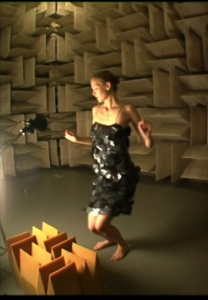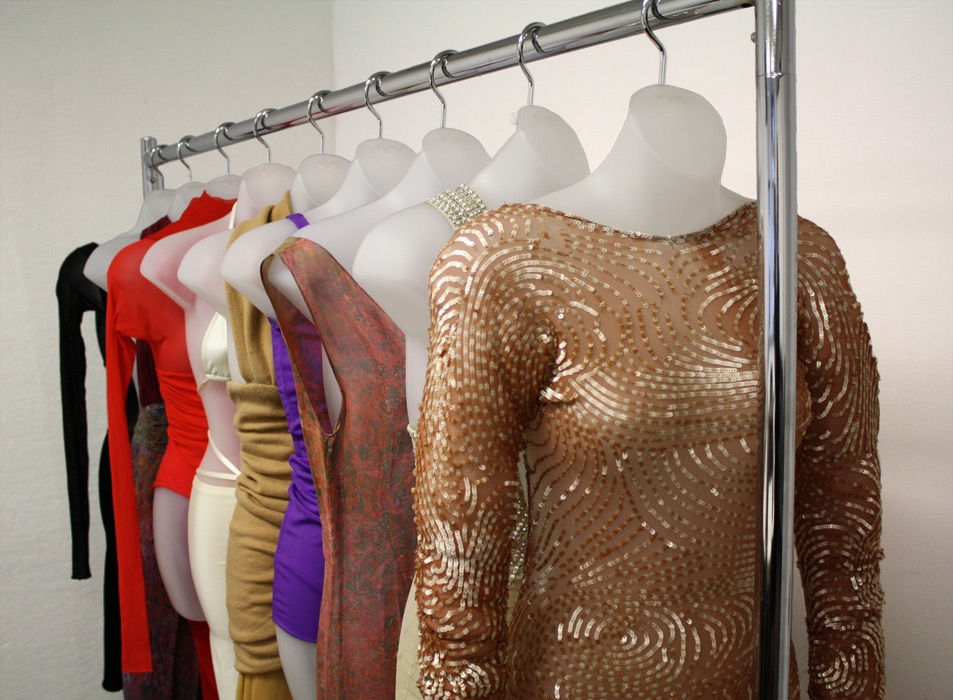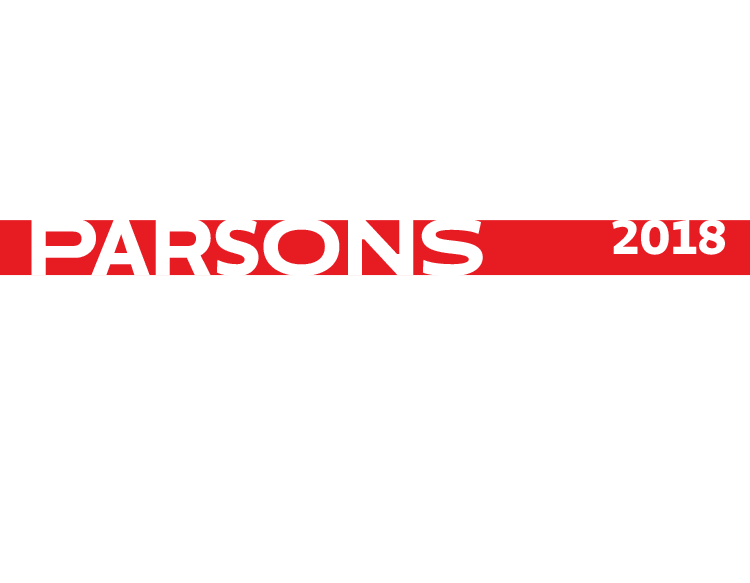Fashion Studies
Parsons School of Design's MA Fashion Studies
Kim Jenkins MAFS ’13, Featured Guest Speaker at Pratt Institute
This past November, Parsons MA Fashion Studies student Kim Jenkins, was featured as a guest speaker in conversation with Maria Echeverri, NYU graduate from the Visual Culture Costume Studies program, as part of Pratt Institute’s “Fashion on 14th” lecture series. Along with several other impressive projects, Kim also plays an integral role within the MAFS program and at Parsons. Currently, she is a Program Assistant to the MAFS Program Director as well as a Teaching Assistant for the undergraduate course, The History of Fashion.
Kim has provided a summary of her conversation with Maria Echeverri:
Organized by Shannon Bell Price (former curator of the Metropolitan Museum of Art’s Costume Institute and now Assistant Chair of Fashion at Pratt Institute), I was part of the Fall 2012 “Fashion on 14th” lecture series with a talk entitled “Emerging Scholars: Fashion and Sound”. As a student interested in relatively unexplored forms of considering and experiencing fashion within our lives, my discussion with Maria Echeverri, NYU graduate from the Visual Culture Costume Studies program, explored her research on the cultural and historical significance of sound as a sensory experience when wearing clothing and accessories.
Expanding upon Joanne Entwistle’s work in theorizing fashion as a “bodily practice”, I found that Maria’s work built a bridge between the sensory experience and our clothing practices in an engaging and convincing way. I was actually expecting our conversation to fall somewhere in the realm of new media, with SHOWStudio being a major influence in the connection between fashion and the senses, but I was pleasantly surprised to find that Maria’s primary sources stemmed from the Renaissance Period. In fact, Maria spends little time addressing sound during the 20th and 21st century, as she had found it to be entangled with music, which would undoubtedly sweep us away into another discussion. Her premise on fashion and sound is more about explaining the way clothing plays a critical role as a form of expression and perception, giving credit to the aural qualities of materials and how the sounds they produce wield as much power as the wearer. Her approach in investigating this topic was a combination of cultural and historical analysis, nestled within a framework of sensory perception. It’s intriguing to say the least.

Model Zora Star shaking and shimmying in a Stella McCartney sequin dress for a microphone in an anechoic room
credit: SHOWStudio.com
“The history of dress is particularly well suited to an examination through the senses. All five senses operate as primary mediators in the creation and systematization of aesthetics, an act of cultural codification that occurs alongside their more corporeal role as transmitters of information for the body.
Similarly, clothing functions as a cultural exchange, where multifaceted and coded messages are communicated through the physical properties of dress distinctive to a particular period. To dress is a choice that is dictated by both personal preference and social parameters that are concurrently culturally constructed.
As the act of wearing clothing is a sensory encounter, thus the interpretation of that action can be enhanced vis-à-vis an acknowledgement of dress as a multi-sensory act. Certain senses, specifically sight and touch, are at the forefront of dressing as a full-bodied experience, yet one would be remiss to discount the other three. Sound may be secondary in function perhaps, but certainly not in significance.
The act of making and hearing noise is implicit in the experience and interpretation of clothing. A thorough examination of the evolving nature of sound in clothing throughout the history of dress ultimately magnifies its importance, while simultaneously explaining its oft-overlooked status by the nuance of its function.”
Maria’s research piqued my interests in sound and wardrobe strategies, since clothing and sound as a topic had yet to be assessed with regards to the study of fashion. The motivation for her thesis is supported by established scholars in our field the likes of Lou Taylor, Joanne Entwistle and Anne Hollander, all of whom have considered clothing as an embodied experience, and have encouraged further scholarship into how clothing engages our senses. Thus, her work can be classified as a contribution to the emerging “bodily-conscious branch” of Fashion Studies.
In our talk for Pratt, I inquired what made a consideration of the senses important in what we’ve worn throughout history, and she placed a premium on establishing a foundation between corporeality and dress. To use wording from Maria’s research, clothing marks “an unclear boundary” of the body, and her work has sought to convey how clothing can act as a transmitter or mediator of expression to the world outside of ourselves. It essentially provides further evidence that clothing is an extension of our self. Perhaps the most accessible way to consider this concept is to think of the jewelry we wear and the noises it makes, or what moving about in leather or taffeta sounds like. Sound, as opposed to visuality, appeals to Maria in that it reveals compelling cases of how it stokes a memory in our mind- an emotion, or in her words a “vivid phenomenon that transcends time and place”. Here, we can situate memory as a bodily experience brought about through dress practices. When you think about it, the evolution of sound and noise-making coincides with the visual history of dress- it is just that no one has really assessed it since we have been unable to capture it as an artifact. Maria shared with us her methodology in tracing the history of the sounds of our clothing, with three historical case studies she had chosen to offer as leading evidence: the Renaissance Period, the Nineteenth Century and the Industrial Age. Her reasoning in choosing those specific periods was that they offered “extraordinary sensitivity” (as analyzed through portraiture, literature, historical documents, and so on) to sound in clothing and accessories.
The preeminent theme that ran through her research was the ongoing societal perception of femininity and the conjoined allure of eroticism. I asked her how she made the connection between the historical evolution of sound and the historical evolution of gender roles, with a succinct answer being that expressing oneself in an erotic way is influenced through culture and time, and complicated by nationality, class and gender. Subsequently, the aural qualities of one’s dress can lend itself to erotic expression, drawing an intersection between dress and the body.
Today we understand sound as something pleasurable, such as the music we listen to, or disruptive in the way of noisy traffic or alarming sounds. Yet often times we don’t really consider beyond the surface just how powerful the qualities of sound is in shaping our memories, mediating our relationships with others and expressing our identity. Maria credited the scholar Brandon Labelle as one who has brought our relationship with sound to the fore as a social and psychological connector, and I was curious how sound presents itself as a sensory experience that could perhaps rival that in significance of sight or touch. Maria’s work illuminates the fact that sound is activated with this omnipresent, multivalent nature to it, and underscores the fact that our physical orientation often times depends on sound. Sound can serve as a warning, a lure or a form of play. She delves deep into the complexity of sound both physically and psychologically, so my paraphrasing merely scratches the surface. For me, the takeaway here is that when we as humans begin to manipulate sound as a form of communication (in this case through dress), intimacy and self-expression emerges.
Now going back to the historical case studies which I mentioned earlier, the first historical case study that we presented was Maria’s assessment of the Renaissance Period. She cited it as the “Age of the Ear” (coined by historian Lucien Fabvres), and it is during this time period where we see the senses imagined as “feminine” in art and literature, with “The Lady and the Unicorn” tapestry series offered as an example. She referenced the scholars Elizabeth Wilson, Peter Stallybrass and Ann Rosalind Jones as they have written about the appropriation of dress and adornment as a type of “currency” and marker of our identity. As a means of making such a dense piece of work easier to visualize for the audience, we broke down the cultural elements that were at play in making communication through dress so important back then. We provided a vivid slideshow that featured portraiture of royalty in garments which appeared noisy- a conspicuous expression of power, we recited literature that poetically illustrated the communicative properties of sound-making garments, and we shared historical documentation that conveyed the imperative nature of sound in both rural and city life as a means of sending information.

Field Armor of King Henry VIII, ca. 1544
Credit: Metropolitan Museum of Art
shows the unapologetically conspicuous aural qualities of royal dress
Moving through Maria’s work chronologically, we analyzed the Nineteenth Century and how it showed a significant step forward in human innovation historically, emphasizing how sound took on a more prominent role in our daily lives. At this point we begin to see industry along with more nuanced cultural values take control of our perception of sound. Specifically, literature, the arts and even politics took part in the awareness we engaged in the sounds we made. Using the mid-century play, “Frou-Frou” as an anecdotal centerpiece read to the crowd, Maria was able to speculate the emergence of sound becoming fetishized and instrumental in developing one’s distinction as an individual, highlighting the fact that the French term “frou frou” directly refers to a specific sound made through one’s dress. In addition, we have caged crinolines, the practice of silk weighting and the highly entertaining (and tragic) tale of Mary M’Ginty’s pursuit of the perfectly on-trend noisy dress as these sort of allegorical artifacts of how sound in clothing displays the nuances of dress practices. We acquiesce to the notion that sound is more significant in our everyday navigation through society than we realize.

Fancy dress costume, House of Worth ca. 1870
credit: Metropolitan Museum of Art
It illustrates the Nineteenth Century question, “Do you rustle (with your dress), or do you ‘frou frou’?”
Towards the end of our conversation, we rolled the final historical case analysis of the Industrial Period into the present, bringing everyone up to speed with new, creative ways that both artists and fashion designers are tinkering with sound as a re-assessment of our relationship with clothing. Despite the overwhelming saturation of sound in our lives today, performers and creatives the likes of Bjork, Nick Cave and Nick Knight remind us of how our dress practices remain a multisensory experience, with sound perhaps being the most provocative. Speaking to a dress made from ostrich feathers and glass microscope slides painted with artificial blood for his VOSS collection, the late Alexander McQueen stated, “There’s blood beneath every layer of skin”. As we showed an image of Bjork, who took to the stage in 2001 shaking around in this dress as an improvisational instrument, Maria Echeverri’s groundbreaking work into the increasingly evolved relationship between our clothing and the sounds it makes is worth a listen.
Discover more through media related to Maria’s research with Nick Knight’s “Anechoic” series for SHOWStudio.com: http://showstudio.com/project/the_sound_of_clothes_anechoic/fashion_films
Read the introduction to Maria’s work published in the Parsons MA Fashion Studies peer-review journal, Fashion Studies Journal, Vol. 1, Issue 1:
http://www.fashionstudiesjournal.org/post/22717359031/fsj-fashion-studies-journal-volume-1-issue-1



